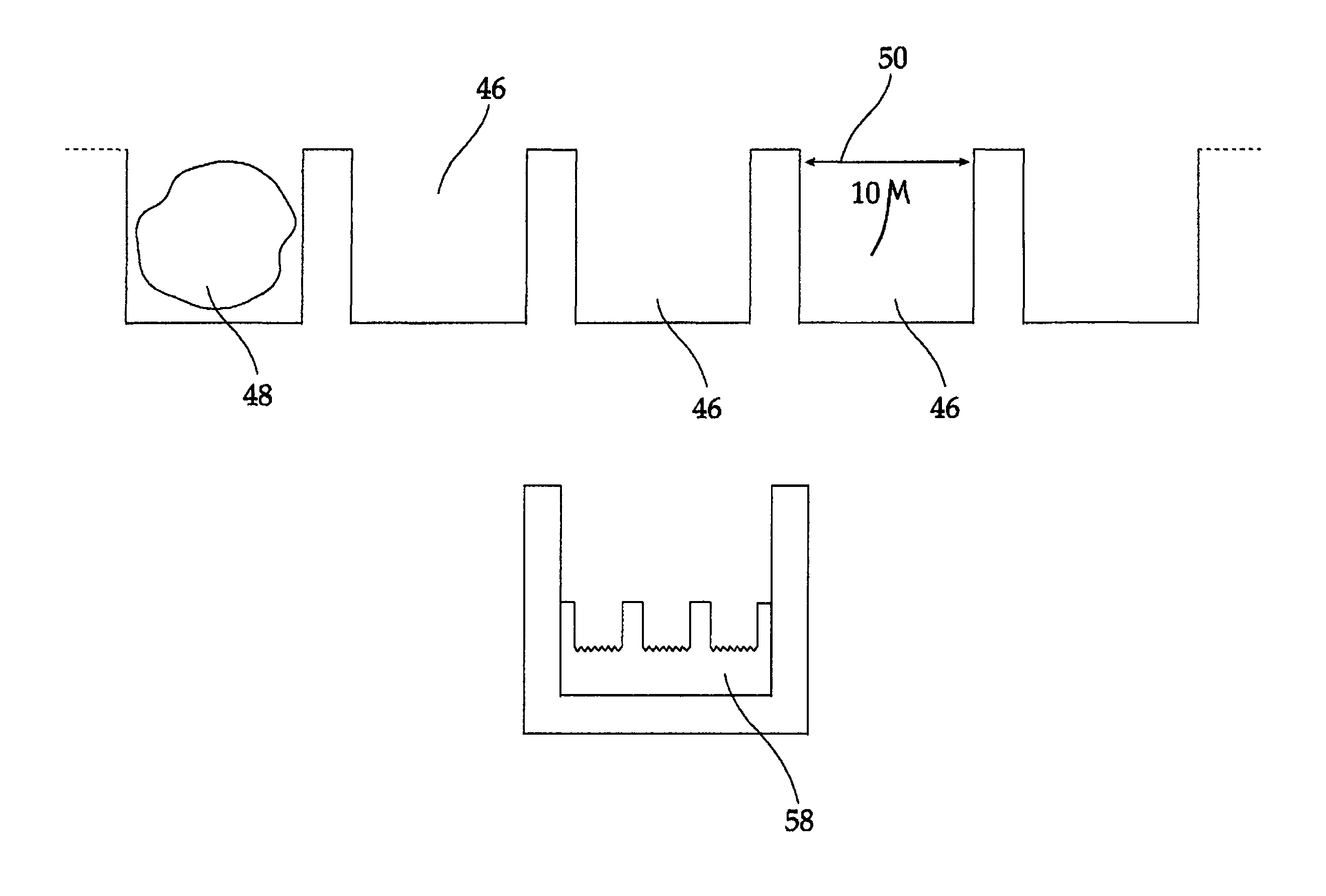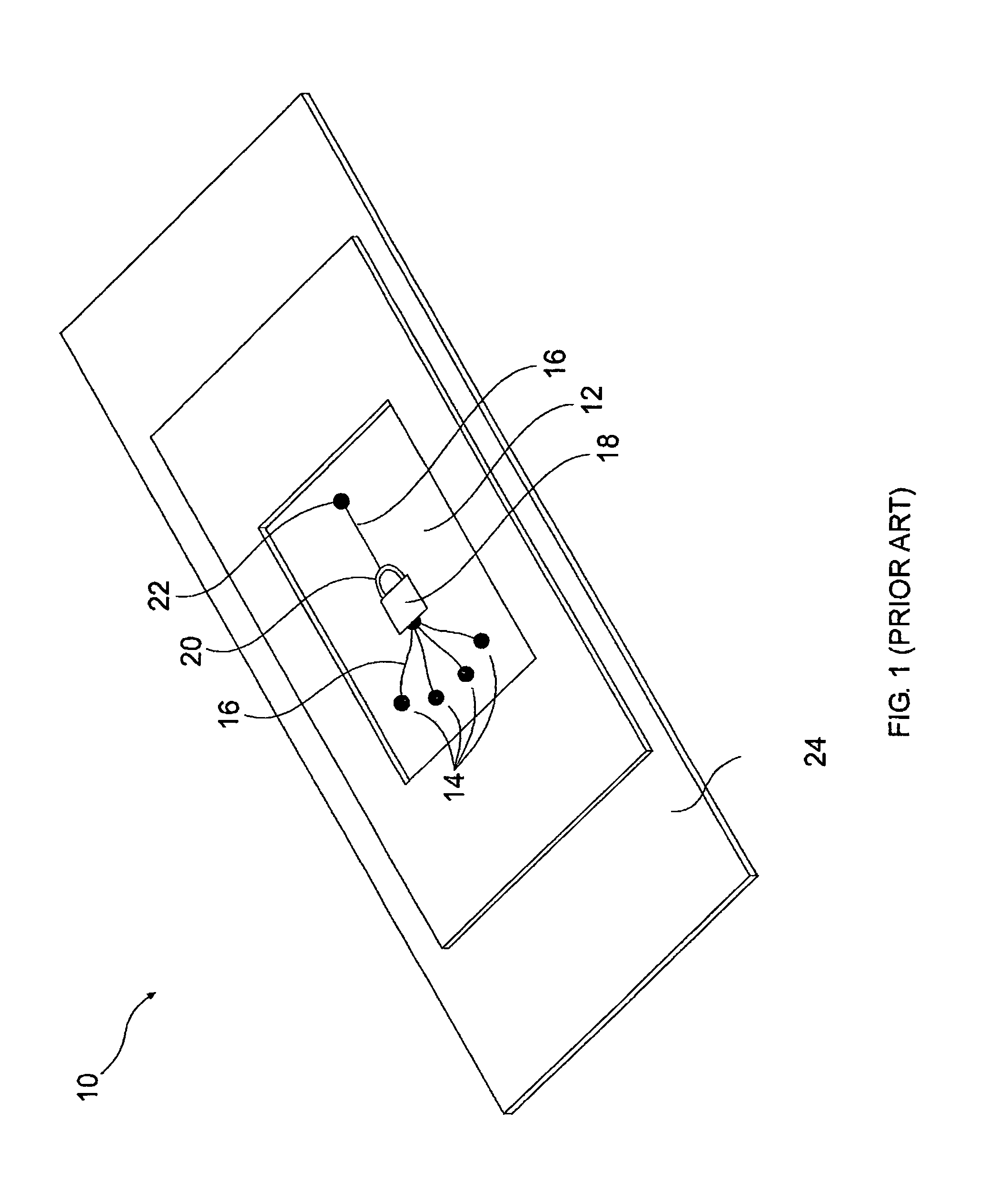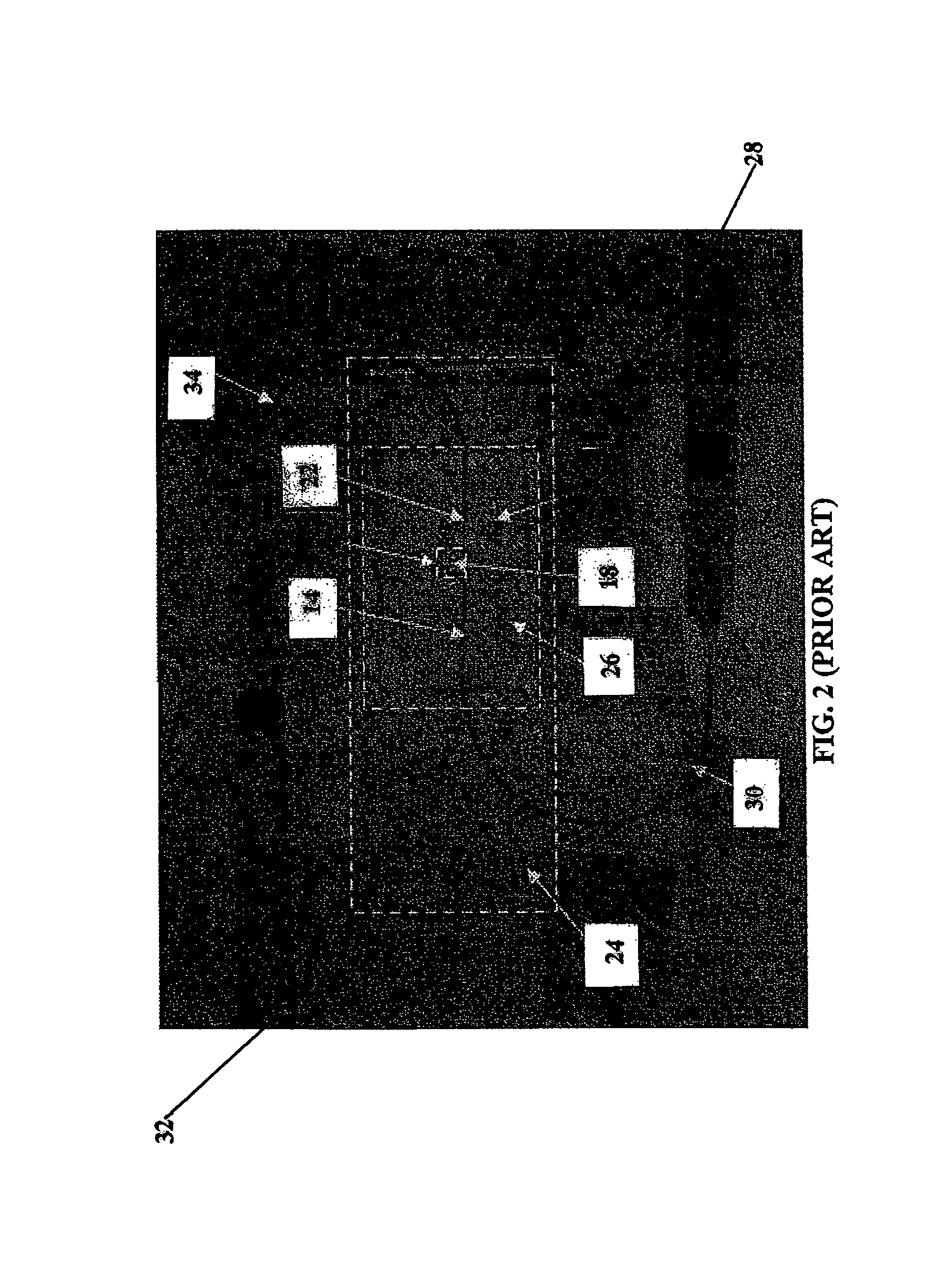Multiwell plate
a multi-well plate and cell technology, applied in the field of cell biology, can solve the problems of difficult high-throughput imaging (for example morphological studies), difficult to find specific individual cells for observation, and inconvenient study of individual cells or even small groups of cells on multi-well plates, etc., to delay the proliferation of living cells held
- Summary
- Abstract
- Description
- Claims
- Application Information
AI Technical Summary
Benefits of technology
Problems solved by technology
Method used
Image
Examples
Embodiment Construction
[0110]The present invention is of a mulitwell plate having a plurality of picowells on the bottom of the wells of the plate. The present invention is also of methods of producing a mulitwell plate of the present invention. The present invention is also of a device comprising an array of living cells held in a non-fluid matrix. The present invention is also of a method of handling living cells by providing an ordered array of living cells immobilized in a non-fluid matrix, contacting the living cells with a stimulus; and detecting a response to the stimulus. The present invention is also of a method of producing an ordered array of living cells.
[0111]The principles and uses of the teachings of the present invention may be better understood with reference to the accompanying description, figures and examples. In the figures, like reference numerals refer to like parts throughout.
[0112]Before explaining at least one embodiment of the invention in detail, it is to be understood that the...
PUM
| Property | Measurement | Unit |
|---|---|---|
| volume | aaaaa | aaaaa |
| diameter | aaaaa | aaaaa |
| volume | aaaaa | aaaaa |
Abstract
Description
Claims
Application Information
 Login to View More
Login to View More - R&D
- Intellectual Property
- Life Sciences
- Materials
- Tech Scout
- Unparalleled Data Quality
- Higher Quality Content
- 60% Fewer Hallucinations
Browse by: Latest US Patents, China's latest patents, Technical Efficacy Thesaurus, Application Domain, Technology Topic, Popular Technical Reports.
© 2025 PatSnap. All rights reserved.Legal|Privacy policy|Modern Slavery Act Transparency Statement|Sitemap|About US| Contact US: help@patsnap.com



